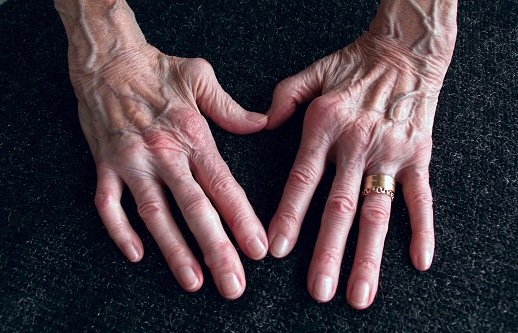Rheumatoid Arthritis ICD 10: Understanding the Classification and Diagnosis
SEO Meta-Description: In this comprehensive article, we delve into the topic of Rheumatoid Arthritis ICD 10, providing detailed insights into its classification, diagnosis, and other essential information. Learn about the ICD 10 codes, common symptoms, treatment options, and more.
Introduction
Rheumatoid Arthritis (RA) is a chronic autoimmune disorder that primarily affects the joints, causing pain, stiffness, and swelling. Proper classification and diagnosis of RA are essential for effective treatment and management of the disease. In this article, we will explore the ICD 10 codes associated with rheumatoid arthritis, its symptoms, diagnostic criteria, and available treatment options.
Rheumatoid Arthritis ICD 10: An Overview
ICD 10 (International Classification of Diseases, Tenth Revision) is a system used by healthcare professionals to classify and code various medical conditions, including rheumatoid arthritis. The ICD 10 code for rheumatoid arthritis is M05 for seropositive rheumatoid arthritis and M06 for other rheumatoid arthritis. These codes are crucial for medical billing, insurance claims, and health recordkeeping.
Understanding the Types of Rheumatoid Arthritis
RA can manifest in different forms, and understanding these classifications helps in providing targeted treatment approaches. The main types of rheumatoid arthritis include:
1. Seropositive Rheumatoid Arthritis (ICD 10 Code: M05)
This type of RA is characterized by the presence of certain autoantibodies in the blood, such as rheumatoid factor (RF) and anti-cyclic citrullinated peptide (anti-CCP) antibodies. Seropositive RA tends to have more severe joint damage and progresses more rapidly than seronegative RA.
2. Seronegative Rheumatoid Arthritis (ICD 10 Code: M06)
In seronegative RA, autoantibodies like RF and anti-CCP are absent in the blood. This form of RA is often milder, with less aggressive joint damage. However, it can still cause significant discomfort and impair daily activities.
3. Juvenile Idiopathic Arthritis (JIA) (ICD 10 Code: M08)
JIA refers to RA that occurs in children under the age of 16. It is the most common chronic rheumatic disease in children. Proper diagnosis and early intervention are crucial to prevent long-term joint damage and functional impairment.
4. Rheumatoid Nodules (ICD 10 Code: L92)
Rheumatoid nodules are firm lumps that develop under the skin, commonly over bony prominences. They can occur in individuals with both seropositive and seronegative RA.
Recognizing the Symptoms of Rheumatoid Arthritis
RA symptoms can vary from person to person, and early detection is vital for effective management. Some common symptoms of rheumatoid arthritis include:
- Joint pain and tenderness
- Morning stiffness lasting for more than 30 minutes
- Swelling and redness around the affected joints
- Fatigue and generalized weakness
- Limited range of motion in the affected joints
- Rheumatoid nodules
- Symmetrical joint involvement (affecting both sides of the body)
It is essential to consult a healthcare professional if these symptoms persist or worsen over time. Early intervention can help prevent irreversible joint damage.
Diagnostic Criteria for Rheumatoid Arthritis
To confirm a diagnosis of RA, healthcare professionals follow certain diagnostic criteria, including:
- Clinical Evaluation: A detailed medical history and physical examination are conducted to assess joint involvement and other symptoms.
- Rheumatoid Factor (RF) and Anti-CCP Antibodies: Blood tests are performed to detect the presence of these autoantibodies, which can aid in the diagnosis of seropositive RA.
- Imaging Studies: X-rays and other imaging modalities may be used to assess joint damage and rule out other conditions.
- Joint Aspiration: Synovial fluid analysis through joint aspiration can help confirm the presence of inflammation in the joints.
Treatment Options for Rheumatoid Arthritis
The goal of RA treatment is to alleviate symptoms, prevent joint damage, and improve overall quality of life. Treatment options may include:
1. Medications
- Disease-Modifying Antirheumatic Drugs (DMARDs): These drugs slow down the progression of RA and help preserve joint function.
- Biologic Response Modifiers: Biologics target specific immune system components to reduce inflammation and joint damage.
- Nonsteroidal Anti-Inflammatory Drugs (NSAIDs): NSAIDs provide relief from pain and inflammation.
2. Physical Therapy
Physical therapy can help improve joint flexibility, strengthen muscles, and enhance overall physical function.
3. Lifestyle Changes
Adopting a healthy lifestyle, including regular exercise, a balanced diet, and stress management, can positively impact RA management.
4. Surgery
In severe cases where joint damage is extensive, surgical intervention may be necessary to repair or replace affected joints.
Frequently Asked Questions (FAQs)
Q: What is the ICD 10 code for seropositive rheumatoid arthritis?
A: The ICD 10 code for seropositive rheumatoid arthritis is M05.
Q: Can rheumatoid arthritis affect children?
A: Yes, rheumatoid arthritis can affect children, and this condition is known as Juvenile Idiopathic Arthritis (JIA).
Q: How is rheumatoid arthritis diagnosed?
A: Rheumatoid arthritis is diagnosed through a combination of clinical evaluation, blood tests, imaging studies, and joint aspiration.
Q: What are rheumatoid nodules?
A: Rheumatoid nodules are firm lumps that develop under the skin in individuals with rheumatoid arthritis.
Q: Is rheumatoid arthritis curable?
A: At present, there is no cure for rheumatoid arthritis. However, early diagnosis and appropriate treatment can effectively manage the condition.
Q: Can lifestyle changes help in managing rheumatoid arthritis?
A: Yes, adopting a healthy lifestyle, including regular exercise and a balanced diet, can help in managing rheumatoid arthritis symptoms and improving overall well-being.
Conclusion
Rheumatoid Arthritis ICD 10 plays a vital role in the proper classification and diagnosis of this chronic autoimmune disorder. Understanding the various types of rheumatoid arthritis, recognizing its symptoms, and following appropriate diagnostic criteria are essential steps in effectively managing the condition. With advancements in treatment options and early intervention, individuals living with rheumatoid arthritis can lead fulfilling and productive lives. Remember to consult a healthcare professional for personalized guidance and treatment plans.


